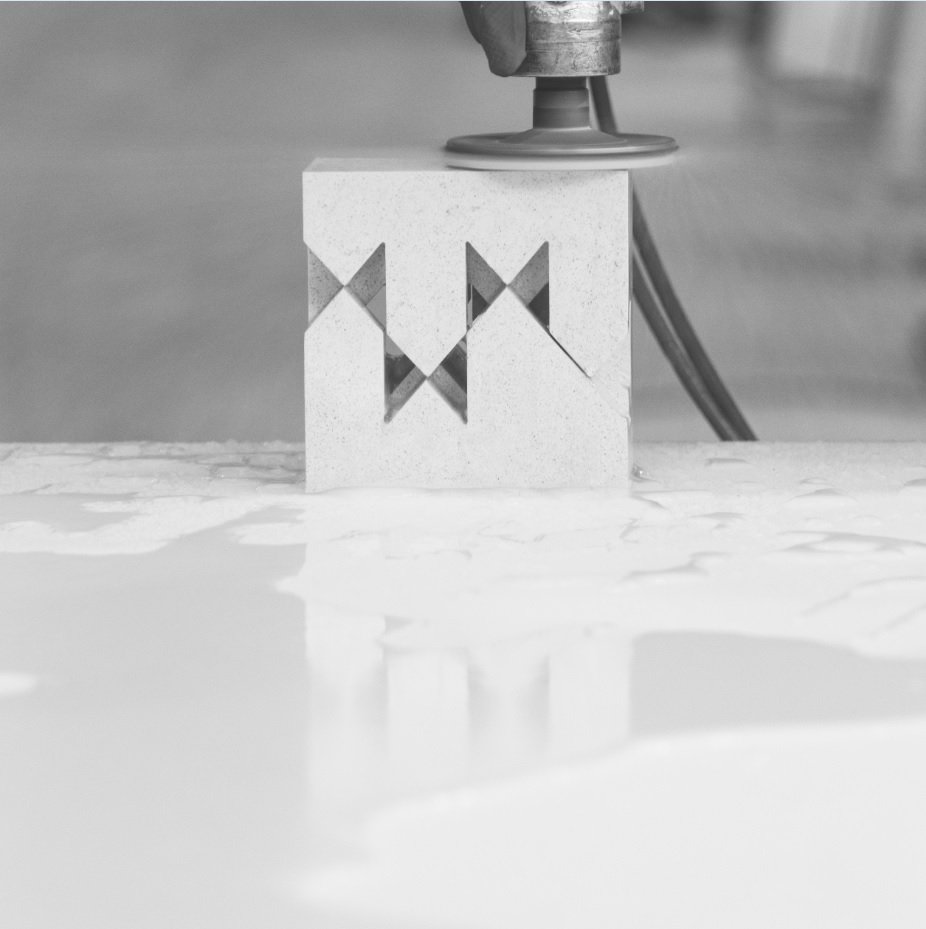In the public spaces of major cities, overwhelmed with hustle and bustle and unsuitable for pedestrians, there is an urgent need to promote solutions that aim to humanise them. Spaces that can raise awareness, convey safety and establish a real connection between people.
This is when art appears unexpectedly in urban spaces before those walking through the streets, inviting them to think critically and participate in self-reflection. Art that engages the emotions, changing the very essence of the space.
In TheDecorativeSurfaces, we refer to Janet Echelman, a renowned contemporary artist who has defied categorisation by installing delicate sculptures suspended in the air in cities across the six inhabited continents.
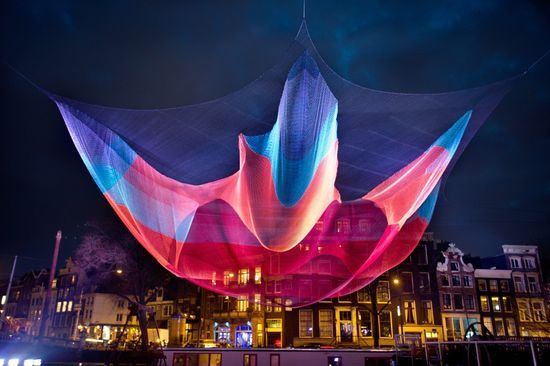
Her works exude tradition and cutting-edge technology, while they sway in the ephemeral wind, provoking sensory emotions in onlookers.
From loss to creativity.
Echelman’s (United States, 1966) creative process stems from loss. The importance this has on opening new horizons and opportunities is evident in her current works of art.
She started producing sculptures when she travelled to India to exhibit her paintings. However, her material never arrived in Mahabalipuram, the small city where her paintings were to be exhibited.
It was this loss that opened new realms of creative opportunity. Unfazed, Echelman began to observe how seafarers tied their nets by hand. This led her towards a new sculptural approach, creating volumetric forms without using heavy materials.
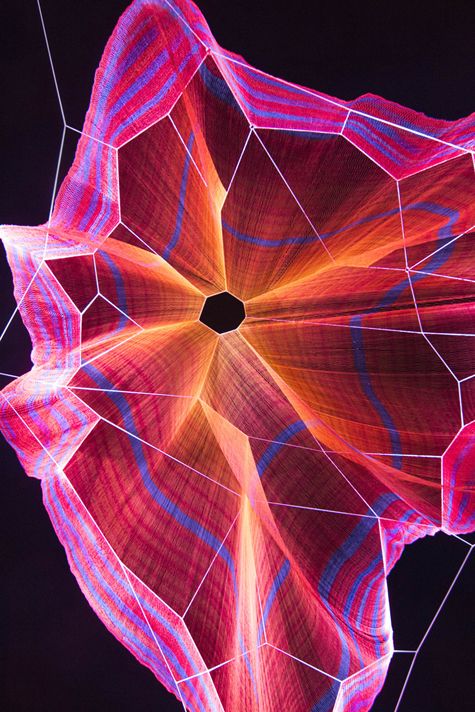 With the fishermen of Mahabalipuram (India), Echelman made her first series of sculptures which she named Bellbottoms (1997), using traditional net-making techniques.
With the fishermen of Mahabalipuram (India), Echelman made her first series of sculptures which she named Bellbottoms (1997), using traditional net-making techniques.
This series represented a magical interaction with the surrounding environment through being exposed to the distinctive characteristics of a small fishing village. Without looking to control nature, but rather surrendering to it, the Bellbottoms series was installed above the sea. This created a dancing movement with the wind, which emulated the ephemeral waves of the sea in a pure and natural way.
Following this experimental artistic work, she created a sculpture with the help of the fishermen, with more than 1.5 million hand-made knots. This peculiar sculpture was installed in Madrid in 2018. Later, the Earthtime series was installed in the urban landscape of major cities such as Dubai, in the United Arab Emirates (2018), Beverly Hills, CA (2019), Borås, Sweden (2021) and Helsinki, Finland (2021).
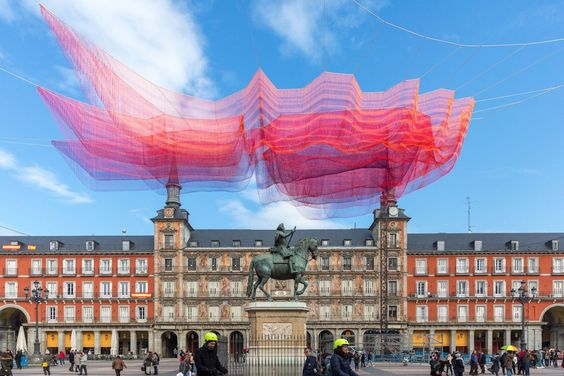
Cutting edge solutions in contemporary urban art.
For this series of sculptures, Janet Echelman combined traditional craftsmanship with cutting edge engineering. So, her large-scale knot sculptures created life-like undulations while combining science and LED technology. This allowed them to be illuminated, creating an almost dream-like sensation.
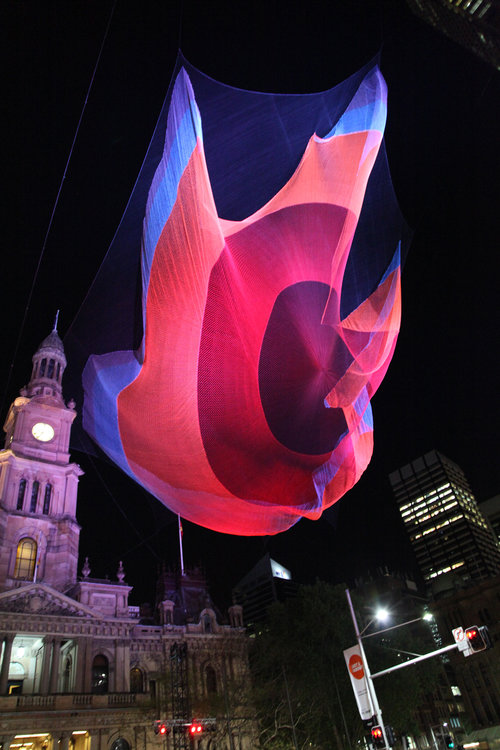
In this night-time illumination, the projects are transformed to created life-like pieces that invite citizens to connect to the urban space. During daylight hours, the magic of the fibres creates a chromatic structure that evolves over time, due to the weather in the location it is installed and the lifespan of the installation itself.
In this way, thanks to the unexpected perception of the object, the artist’s contemporary sculptural works change the essence of the public space and develop from a simple object to be observed, to an occupied environment.
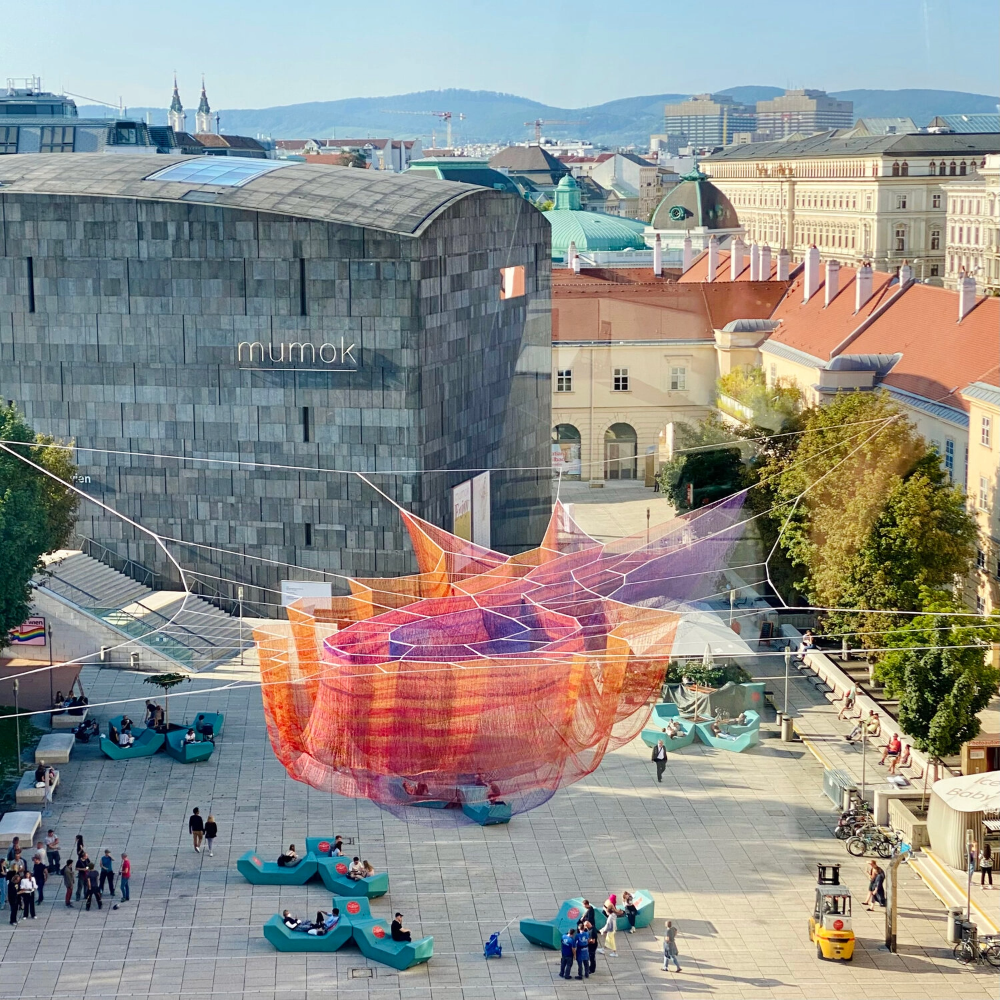
Conceptually, her Earthtime sculpture series address the destructive forces of nature, and how they can have an impact on the planet’s life. This concept is reflected in the ephemeral and unexpected movements caused by the wind in Echelman’s sculptures.
Every time a knot is moved by the wind, the other knots that form the structure mirror this movement, without being able to predict what is going to happen. It may seem like chaos theory, where huge sculptural masses surrender to the force of nature via tiny knots.
This concept addresses the current issues on sustainability and respect for the environment in a subtle and unforced way. They are works that appear unexpectedly before passers-by, inviting them to heighten their awareness.
The sensory experience of sculptural lighting.
The force of nature is integrated into the artificial lighting with different coloured LED installations, which evokes emotions in observers, connecting them with the experience, which is capable of stimulating critical thinking.
Light and architecture are woven into all of Janet Echelman’s sculptural works, provoking emotional reactions by receiving light waves. These light waves generated by LED lighting, once absorbed by the human brain, enable an innate hormonal reaction, melatonin.
A large number of artists, architects and designers have taken advantage of this physiological response in order to provoke an emotional response in spectators that improves their mood.
A sensory experience installed in major cities that creates a communal space for reflection, where the public is transformed into an intimate introspective area that may seem coincidental.
Where the city stops, adapts and is humanised through the emotions that art can only convey if it is approached with an open mind. With an open soul, engaged in life.

